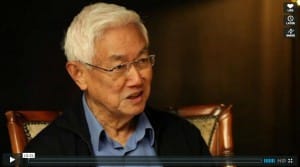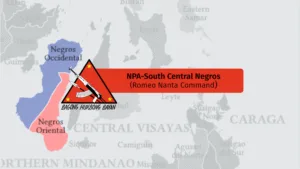
Communist Party of the Philippines
The current chief executive officer of the moribund Philippine semicolonial and semifeudal system, Benigno Aquino III, is thumping his chest, proud of the 7.1% third quarter growth in the Philippine gross domestic product (GDP) reported by his technocrats last 28 November.
Amid the worsening socio-economic conditions of the people, Aquino is working hard to make the people believe that his promise of so-called “inclusive growth” is just around the corner in hopes of placating the people’s anger and staving off their resistance.
Aquino’s growth statistics, however, fall flat in raising the people’s enthusiasm. There is zero indication of an economic u-turn.
As before, Aquino’s economic policy is directed towards attracting foreign investments by pulling down wages and providing the physical and financial infrastructure for foreign big capitalists. Aquino continues to hinder domestic economic progress and stifle the demand for social justice by blocking land reform and national industrialization. Local production, both in agriculture and manufacturing, continues to be geared principally towards the slumping export market.
Aquino’s GDP growth statistics are nothing but the death throes of a moribund economic system. Aquino is steering the economy in exactly the same disastrous path taken under Arroyo, Estrada, Ramos and all other previous regimes. In line with imperialist economic dictates, Aquino and his technocrats are veering away from genuine industrial progress and agricultural modernization.
The much-vaunted 7.1% GDP growth rate in the 3rd quarter was driven primarily by the 24% growth in construction spending, largely for office space, retail malls and housing. Such construction spending is based on speculations of continued growth in business processing operations and consumer spending driven by migrant workers’ remittances. As much as 2.2 million square meters of office space will be constructed towards 2015, mostly in Quezon City, Makati, Mandaluyong and Manila to address the hypothetic growth of foreign business processing operations in the Philippines.
In many respects, this is the same speculative activity that drove the so-called “economic growth” in the early 1990s under the Ramos regime. By 1997-98, however, a real estate slump left a bleak landscape of vacant office spaces and abandoned half-done subdivisions funded by foreign portfolio investments.
Such “growth” driven by call centers and condominium construction is bound to recoil on the Philippine economy in a few years. The current clamor in the US for government to subsidize in-sourcing is tolling the death knell for local call centers. These are bound to suffer the same fate as the thousands of nursing schools that sprouted in the early 2000s and later abandoned after the demand for nurses and caregivers dwindled before the end of the decade.
To achieve and sustain the construction-driven “economic growth,” the Aquino regime has been clearing valuable urban real estate in the National Capital Region by demolishing urban poor communities occupying vast tracts of land.
Aquino’s “economic growth” does not help uplift the conditions of the people even in the short run. From June to September, the same period covered by the “beyond expectations economic growth,” government statistics show that employment actually dropped by 0.1%, which translates to around 250,000 workers losing their jobs.
Aquino’s “job creation” strategy is comprised of sheer statistical manipulation. By changing definitions of employment, it has “succeeded” in bringing down unemployment to around 6-7% from around 9-10% a few years ago.
Independent labor force surveys put the unemployment rate at 22% at the very least — a more credible figure considering that as much as 75% of employment generated over the past year was part-time in nature. As much as 25% of so-called new jobs are classified as “unpaid family work.” This is a catch-all category to cover people out of work trying to eke out a living by setting up small sari-sari stores, food stalls, and the like. Underemployment, another catch-all category to hide the real extent of unemployment, has now soared beyond 20%. The extreme scarcity of jobs has forced more than 9 million Filipino to work overseas as contract workers.
More than 40% of the unemployed have college-level education, clearly showing the extent to which skills and knowledge available to the local economy are being wasted by the failure of the reactionary state to carry out economic modernization.
Aquino’s overblown economic growth statistics cannot conceal the fact that the Philippine economy remains principally agrarian and backward. The main trend is stagnation and crisis.
The Philippine reactionary state does not have the economic motivation and political will to develop the local productive forces and modernize the economy. It goes against the nature of the ruling classes of big landlords and big bourgeois compradors to develop the local economy as an independent and progressive economy.
Philippine economic modernization and progress can only be achieved by breaking up the feudal land monopolies through genuine and thoroughgoing land reform and putting an end to dependence on foreign investment and foreign capital infusion through a comprehensive program for national industrialization.
Such can only be carried out by a revolutionary people’s democratic government that is determined to blaze the path of national and social liberation.













